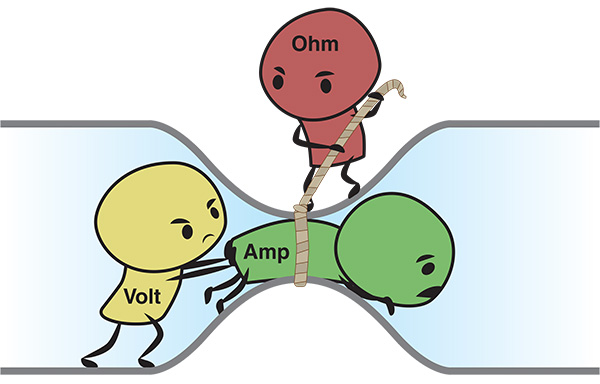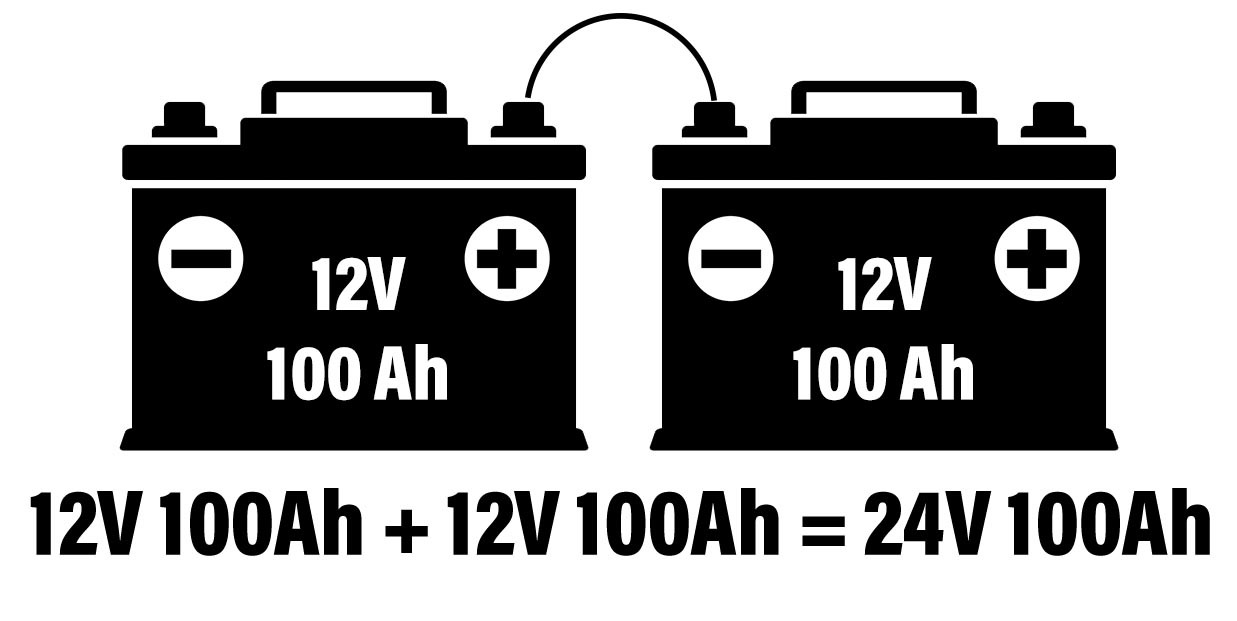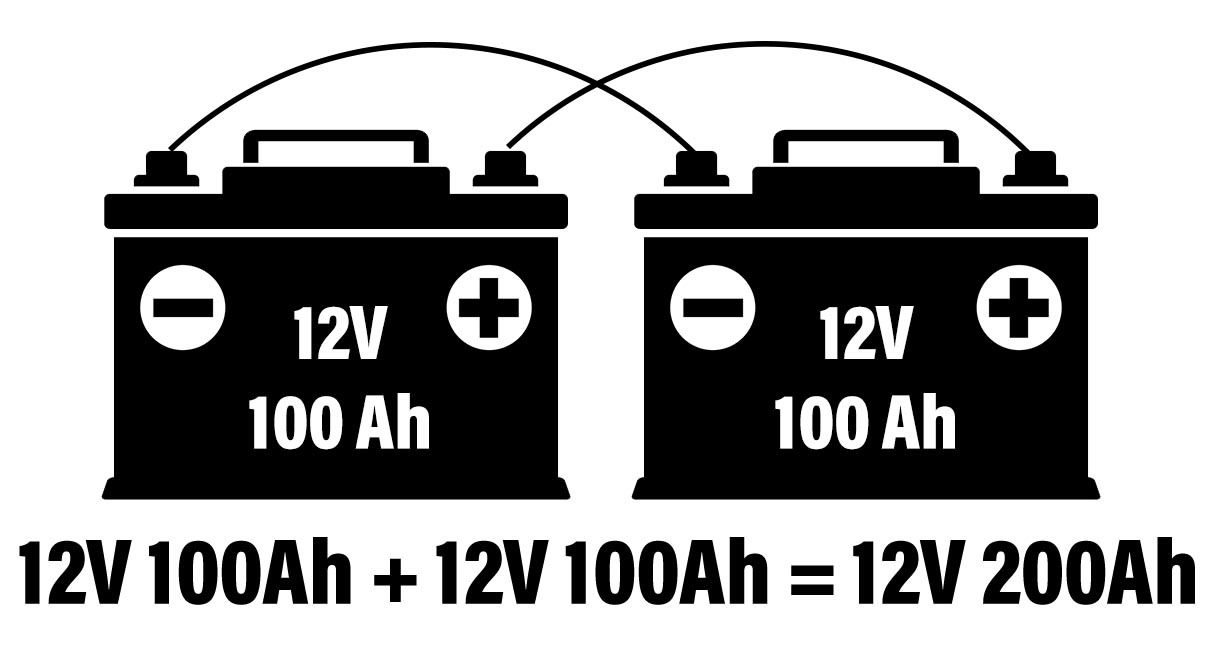
- China
- English
- Françai
- Español
- Deutsch
- Română
- العربية
- 한국어
- 日本語
- Italiano
- Português
- Gaeilge
- Dansk
- Čeština
- Русский
- Afrikaans
- Euskara
- Català
- Esperanto
- हिन्दी
- Ελληνικά
- Bahasa Melayu
- Polski
- Српски
- Kiswahili
- ภาษาไทย
- Tiếng Việt
- Türkçe
- Svenska
- Cymraeg
- Slovenčina
- Latviešu
- Malti
- Magyar
- Galego
- ગુજરાતી
- Eesti Keel
- বাংলা
- Shqip
- беларуская мова
- Nederlands
- Tagalog
- ქართული
- Íslenska
- Kreyòl Ayisyen
- Lietuvių
- Norsk
- slovenščina
- தமிழ்
- Українська
- ײִדיש
- اردو
- తెలుగు
- فارسی
- македонски
- ಕನ್ನಡ
- Bahasa Indonesia
- עברית
- Suomi
- Hrvatski
- Български
- Azerbaijani

Industry Application
Product Type
How to Wire lithium Batteries in Parallel or Series
| Here at BSLBATT Power BSLBATT Lithium We are proud to produce rugged and reliable lithium iron phosphate batteries in 118 locations around the world. It may not be surprising that we receive a lot of battery-related questions.
One of the most common questions is “I need more power! Do you have batteries that can provide more voltage or more amps?” The answer is yes. All of our batteries can be connected to produce more power to run a bigger motor (voltage – v) or additional capacity (amp-hours – Ah). This is called connecting batteries in series or lithium batteries in parallel. In simple terms: series increases voltage, parallel increases capacity. Wiring a battery in series is a way to increase the voltage of a battery. For example if you connect two of our 12 Volt, 10 Ah batteries in series you will create one battery that has 24 Volts and 10 Amp-hours. Since many electric motors in kayaks, bicycles, and scooters run on 24 volts this is a common way of wiring batteries. Lithium ion batteries in parallelis to increase the amp hours of a battery (i.e. how long the battery will run on a single charge). For example if you connect two of our 12 V, 10 Ah batteries in parallel you will create one battery that has 12 Volts and 20 Amp-hours. Since many small electric motors, solar panels, RVs, boats, and and most household electronics run on 12 volts this is a common way of creating a battery that will last a super long time. Series connections involve connecting 2 or more batteries together to increase the voltage of the battery system, but keeps the same amp-hour rating. Keep in mind in series connections each battery needs to have the same voltage and capacity rating, or you can end up damaging the battery. To connect batteries in series, you connect the positive terminal of one battery to the negative of another until the desired voltage is achieved. When charging batteries in series, you need to utilize a charger that matches the system voltage. We recommend you charge each battery individually, with a multi-bank charger, to avoid imbalance between batteries. If you think of electricity as water flowing through a system of pipes, voltage is best thought of as water pressure and so is the metric by which we can measure how forcefully electrical current flows. Amps would be the size of the pipe that that water flows through, and thus is the metric by which we measure how much power we can output at a given moment. Amp hours then, in this instance of plumbing analogies, is a measure of how many gallons of water are moving through your pipes over time.
I’ve always found this image (and many like it on the internet) to be helpful in explaining electricity. CONNECTING BATTERIES IN SERIESBattery packs are designed by connecting multiple cells in series; each cell adds its voltage to the battery’s terminal voltage. Figure 1 below shows a typical BSLBATT 13.2V LiFePO4 starter battery cell configuration.
Parallel Connection connects multiple batteries in parallel; each battery adds its battery capacity to the ports of the battery. CONNECTING BATTERIES IN PARALLEL |
A Guide to Choosing the Best 48V Lithium Golf Cart Battery
Would it be worth investing in a 48V ...
10 Exciting Ways To Use Your 12V Lithium Batteries
Back in 2016 when BSLBATT first began designing what would become the first drop-in replacemen...
BSLBATT Battery Company Receives Bulk Orders from North American Customers
BSLBATT®, a China Forklift battery manufacturer specializing in the material handling indust...
Fun Find Friday: BSLBATT Battery is coming to another great LogiMAT 2022
MEET US! VETTER’S EXHIBITION YEAR 2022! LogiMAT in Stuttgart: SMART – SUSTAINABLE – SAF...
Looking for new Distributors and Dealers for BSL Lithium Batteries
BSLBATT battery is a fast-paced, high-growth (200% YoY ) hi-tech company that is leading the a...
BSLBATT to Participate at MODEX 2022 on March 28-31 in Atlanta, GA
BSLBATT is one of the largest developers, manufacturers, and integrators of lithium-ion batter...
What makes the BSLBATT the Superior Lithium Battery for your Motive Power needs?
Electric forklift and Floor Cleaning Machines owners who seek the ultimate performance will fi...





































